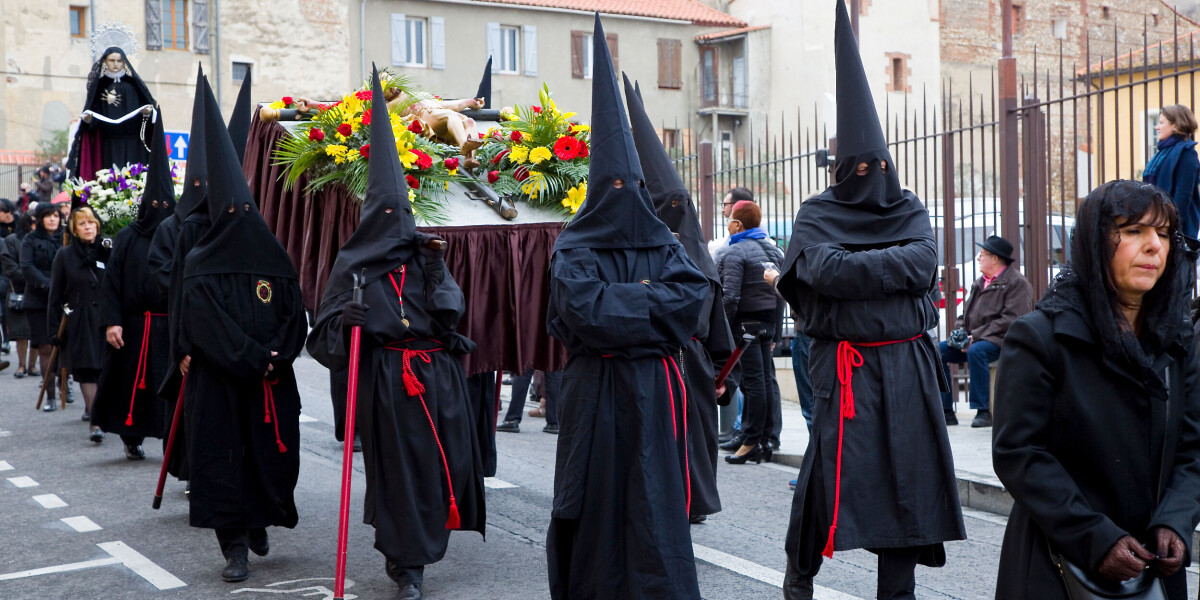
Easter traditions across france: from rattles and hooded processions to giant omelettes
- Select a language for the TTS:
- UK English Female
- UK English Male
- US English Female
- US English Male
- Australian Female
- Australian Male
- Language selected: (auto detect) - EN
Play all audios:

REGIONAL PÂQUES CELEBRATIONS HIGHLIGHT FRANCE’S CULTURAL DIVERSITY Hunting for chocolate eggs and eating lamb for lunch (gigot d’agneau) are traditional staples of Easter weekend, however
different regional customs also exist across France. This year, Easter Sunday falls on April 20, but in some places the celebrations begin tonight (Thursday April 17). Note that unlike
countries such as the UK and Australia, most places in France do not celebrate Good Friday with a bank holiday, apart from the departments Moselle, Bas-Rhin et Haut-Rhin. Here’s a look at
various regional Easter traditions. RATTLES IN LORRAINE Children in Lorraine go through the streets shaking rattles from Thursday night until Saturday morning. It is done to replace the
church bells which stay silent around France during this Easter period. It is said that the bells (les cloches de Pâques) fly off to Rome to be blessed by the Pope. They return on Saturday
bearing chocolate and presents to celebrate the resurrection of Jesus Christ. In Catholic tradition, the bells are said to scatter their gifts around gardens, in fields, on balconies or in
houses, for children to find. Read more: Why you won’t be hearing church bells much in France for a few days In non-Catholic regions, notably in the north-east of France in Alsace and
Lorraine, the Easter Bunny (un lièvre) is the one who hides the eggs, rather than the bells. HOODED PROCESSION IN PERPIGNAN On Good Friday (April 18), a procession known as la Procession de
la Sanch takes place in various towns in the Pyrénées Orientales. It is a Catalan tradition featuring hooded penitents dressed in red and black gowns. The ceremony dates back to the 16th
Century, when Dominican monks were responsible for accompanying those condemned to death to the gallows. Their aim was to protect the condemned from being lynched by the crowd, while
guaranteeing them a religious burial. Every year more than 10,000 people line the streets to watch the parade. In Perpignan, the event will begin at 15:00, leaving from the église
Saint-Jacques de Perpignan. GIANT OMELETTE IN BESSIÈRES This commune in the Haute-Garonne is famous for its giant omelette, made by the Confrérie Mondiale des Chevaliers de l'Omelette
Géante (Global Brotherhood of the Knights of the Giant Omelette). This association of shopkeepers and craftsmen was founded in 1973, based on the tradition of collecting eggs from local
farms to give back to those in need. The idea has gradually gone ‘global’, expanding to include towns in Belgium, Canada, America and Argentina. Read also: How to keep hens as part of a
self-sufficient life in France The free outdoor event attracts thousands of people to Bessières each Easter Monday (April 21). This year, a parade will begin at 10:30 followed by the
preparation of a 15,000-egg omelette. Free tastings will be handed out at 12:30. REGIONAL EASTER TREATS The pastis gascon, also known as croustade gasconne, is a flaky apple pie flavoured
with Armagnac, sometimes offered at Easter and other religious holidays in the departments of Landes and Gers. In Corsica, the fiadone is typically prepared for Easter, although it is also
eaten all year round. This traditional dessert resembles a flan, usually made with eggs, sugar, lemon and brocciu (a soft Corsican whey cheese made from ewe’s milk). Read also: Learning
French: 10 Easter-themed expressions
